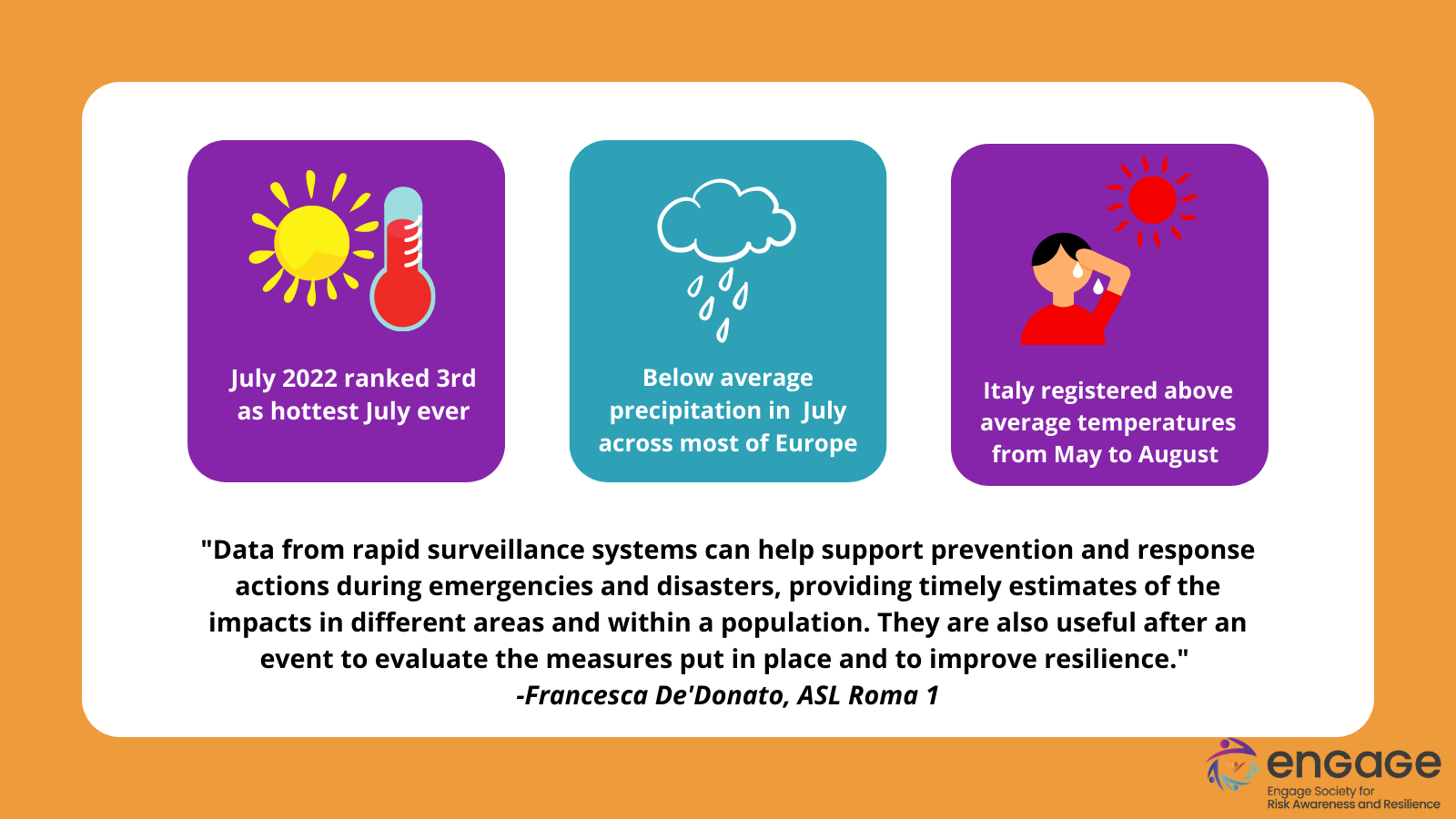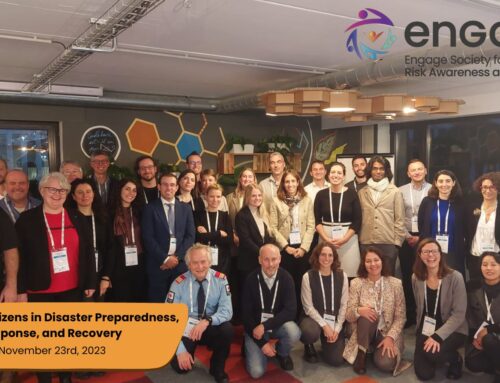Introduction
According to the latest Copernicus climate bulletin, globally, July 2022 ranked third as the hottest July ever. In Europe, the intense and prolonged heat wave of mid-July- with peaks of 40°C recorded in several countries- resulted in monthly record temperatures above the 1991-2020 average for July. Furthermore, the month of July recorded below average precipitation across most of Europe and drought in several areas of southern Europe. The heat wave of mid-July recorded increases in mortality in several European countries such as England, France, Germany, Spain, Italy and Portugal (www.euromomo.eu).
In Italy, Summer 2022 has registered above average temperatures starting in May up until August. A first intense heat wave was registered between the last week of June and the first week of July mostly in central and southern Italy , which lasted for over 10 days with extreme temperatures of 40°C. A second intense heat wave was registered starting from mid-July to the 26th with record high temperatures across the country. A third, less intense, heat wave was registered during the first week of August.
The role of rapid surveillance systems
The Italian Heat Health Adaptation Plan (HHAP) managed by the Department of Epidemiology ASL ROMA 1 on behalf of the Italian Ministry of Health has issued heat warnings throughout summer to raise awareness. The Italian Ministry of Health has set up the rapid mortality surveillance System (SiSMG) to ensure a near-real time evaluation and monitoring of the health impact of extreme weather events, such as heatwaves, as well as epidemic surveillance like influenza in winter and, in more recent years, for the COVID-19 pandemic. Data from SISMG also contributes to the EUROMOMO network.
The latest report gives a first insight on the impact of summer 2022 heatwaves on mortality in Italy with above average total mortality among the elderly (aged 65 years and over) in June (+9%), in July (+29%) and during the first half of August (+18%). During the second half of July, when an intense heatwave with level 3 warnings were issued, an excess in mortality of 36% was observed with greater impacts among the very old (85 years and above) and in cities of northern Italy.
Further epidemiological analysis from Department of Epidemiology ASL ROMA 1 will allow more in depth estimates on the impact of summer 2022 heatwaves in Italian cities taking into account the impact of the both heat waves and COVID-19.
Implications for managing disasters and improving societal resilience
Data from rapid surveillance systems can help support prevention and response actions during emergencies and disasters by not only providing timely estimates of the impacts in different areas and within populations, but also to better manage risks and validate and evaluate actions and plans put in place to improve response and community resilience. Within ENGAGE, the Department of Epidemiology ASL ROMA 1 will be involved in validation actions with the heat wave case study solution, aimed at improving societal resilience to heat waves and integrating formal solutions in place in the Lazio Regional Heat Plan. Best practice solutions identified in the ENGAGE Knowledge platform and collaborative work with NGOs, local Health services, social services, Civil protection and other local stakeholders involved will also be utilized. Data from SISMG and the Regional heat surveillance plan will be referred to to validate the solution and can be extended to manage other disasters and evaluate response plans.
By: Francesca De’Donato, ASL Roma 1





